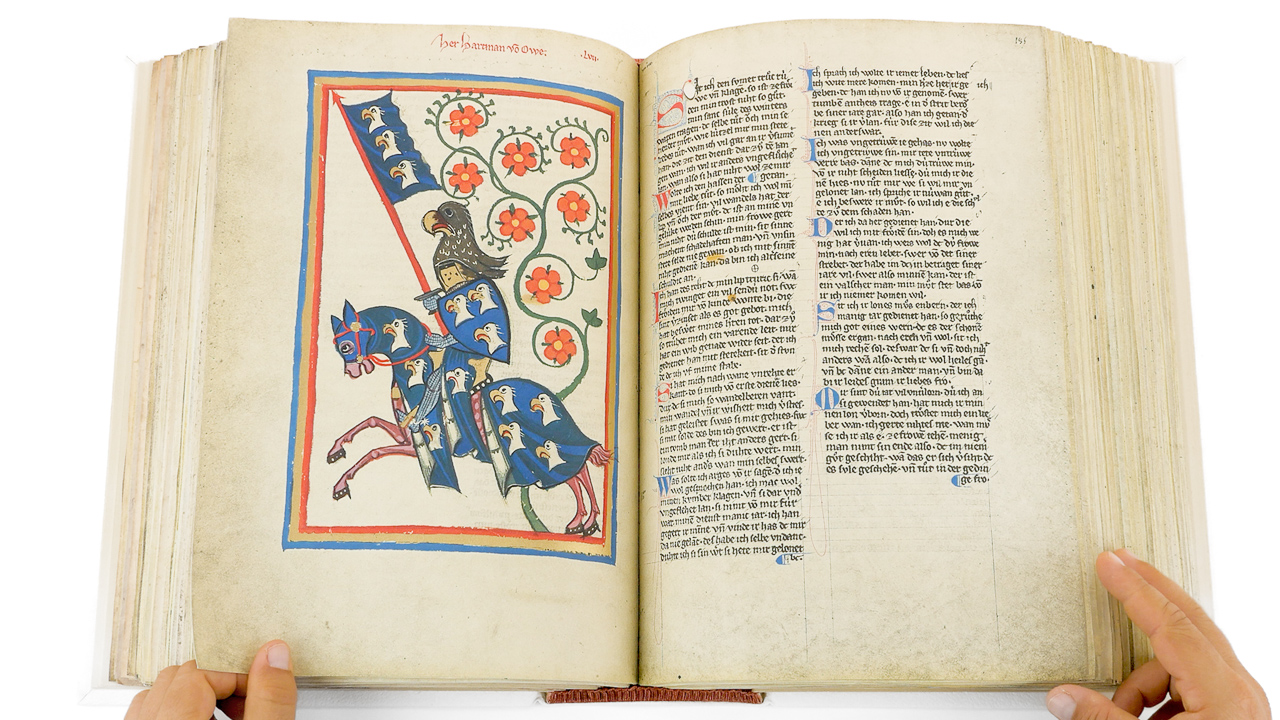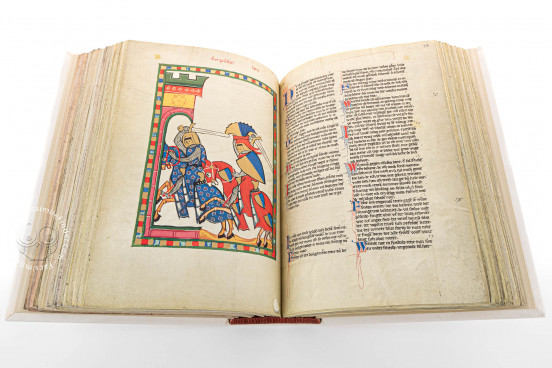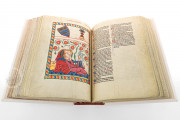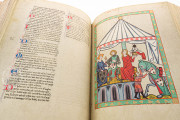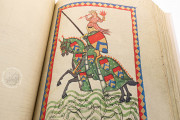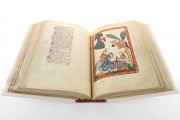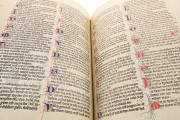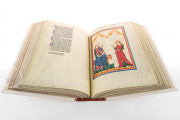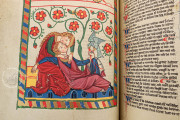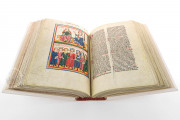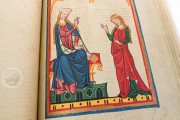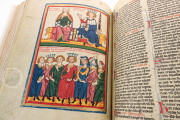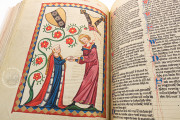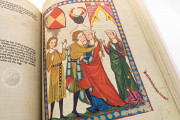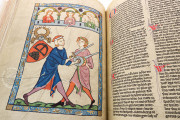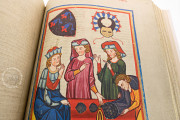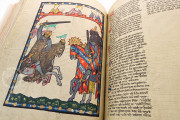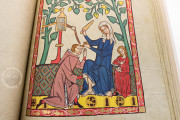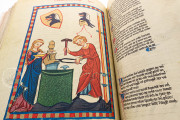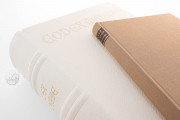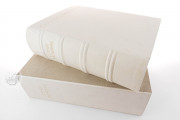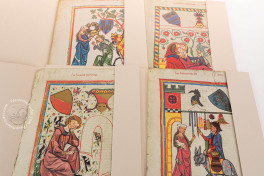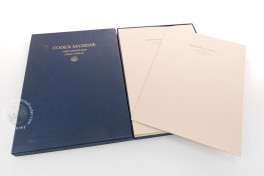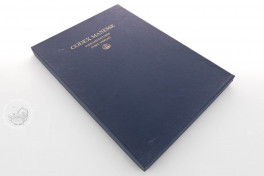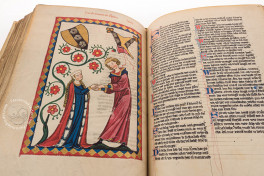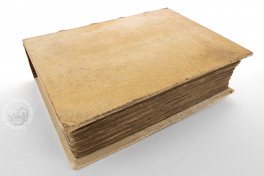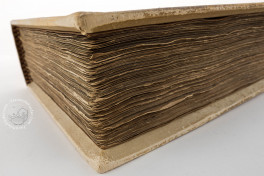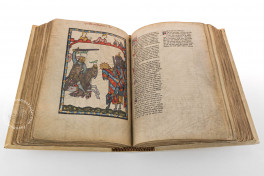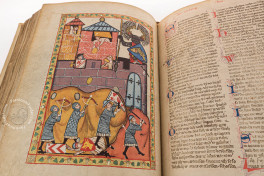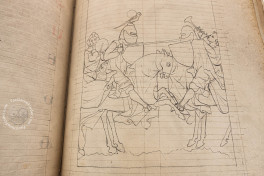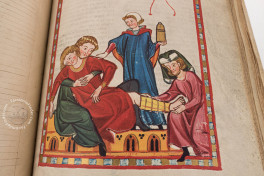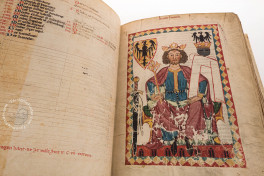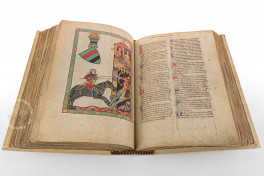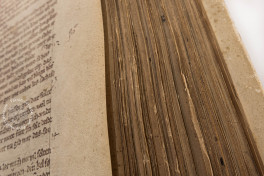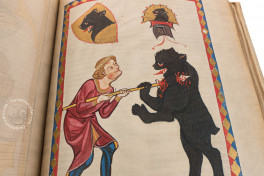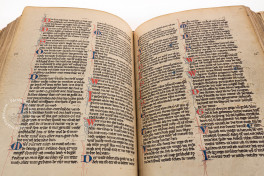The Codex Manesse is the most important surviving manuscript of medieval German lyric poetry. Compiled around 1300 in Zurich with later additions, the manuscript contains around 5400 song stanzas and is enriched with 137 brilliantly colored full-page portraits of the poets. The portraits feature heraldry and depict aristocratic activities. It includes repertoire dating from the middle of the twelfth century to the time of the manuscript's compilation. Produced for an intellectual urban elite, the Codex Manesse is a unique artistic, literary, and social artifact of the late medieval Holy Roman Empire.
The Manesse manuscript is an anthology of the works of 140 poets, ordered by social status, beginning with Henry VI (1165-1197), Holy Roman Emperor, and moving down the ranks of the nobility to professional poets without noble rank.
A Gallery of Aristocratic Portraiture
The manuscript is most famous for its magnificent series of full-page miniatures depicting poets, each included at the start of the respective poet's corpus. Each painting is an idealized representation of the author performing courtly activities appropriate to his social status or the content of his lyrics.
A single illuminator, working with assistants, was responsible for most of the miniatures. Vibrant colors and simple blue, red, and gold geometric borders distinguish their work. The remaining twenty-seven portraits are attributed to three other illuminators.
A Collection of Lyric Poetry
The text of the Codex Manesse is written in two columns in a formal Gothic script. A single scribe was responsible for most of the text. He was assisted by six other scribes, one of whom was probably his pupil. Another five scribes supplied annotations—including the historian Melchior Goldast (1578-1635).
At the beginning of each corpus is a large pen-flourished initial in red and blue. Many are puzzle initials, letters rendered in red and blue in shapes that interlock like jigsaw puzzle pieces. The largest (12 lines tall) introduces the poetry of Johannes Hadlaub, a Zurich poet who may have been involved in compiling the book's contents. Each stanza opens with a smaller pen-flourished initial.
Namesake of a Group
The Codex Manesse gives its name to the three largest surviving collections of German-language lyric poetry, the "Manesse Group." The others are the Weingarten Manuscript, which also boasts portraits of the poets that rely on a shared model, and the Small Heidelberg Song Manuscript.
A Turbulent History
The codex was presumably made for Rüdiger Manesse (d. 1304), his son Johannes, and Rüdiger's patrician friends. It is first recorded in the collection of Johann Philipp von Hohensax (1550-1596). After Goldast published excerpts from the codex in 1604, Friedrich IV (1574-1610), Elector Palatine, removed the manuscript to his library in Heidelberg.
The manuscript is next recorded in the library of Jacques Dupuy (1591-1656), who bequeathed it to the French royal library, the foundation collection of the Bibliothèque nationale, established in 1792. Purchased by the Prussian government, the Codex Manesse joined other manuscripts of the historical Palatine Library at the Universität Heidelberg in 1888. Its current binding of brown leather dates from the twentieth century. The Codex Manesse was added to the UNESCO Memory of the World Registry in 2023.
We have 3 facsimiles of the manuscript "Codex Manesse":
- Codex Manesse. Vier Miniaturen facsimile edition published by Insel Verlag, 1988
- Codex Manesse: Die Grosse Heidelberger Liederhandschrift facsimile edition published by Insel Verlag, 1981
- Codex Manesse facsimile edition published by Insel Verlag, 1925-27

